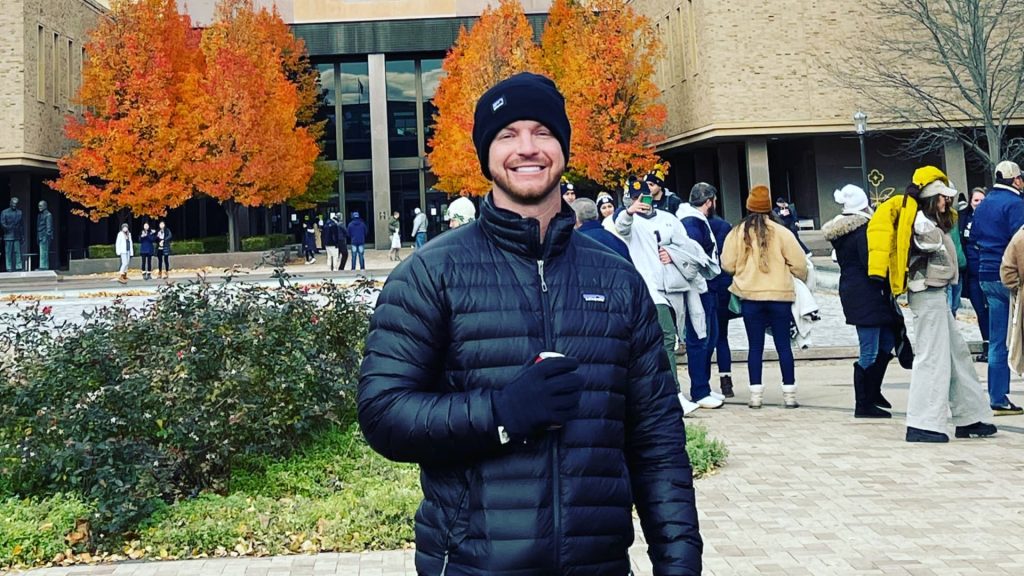Josh Harner
Courtesy: Josh Harner
A myriad of recent changes to the federal student loan system have made it difficult for some borrowers to get someone on the phone — whether from the Department of Education or their loan servicer — who can answer their questions accurately.
“You never get a straight answer,” said one student loan borrower, Josh Harner, 38.
Another borrower Dan Carrigg, 41, said: “I have been told all kinds of conflicting information.”
Both men are stuck in a more than 72,000-person backlog for a program that helps borrowers access Public Service Loan Forgiveness, and have been trying for months to get updates on their applications.
At times, some borrowers struggle to even get in touch with someone at their student loan servicer to discuss their account, said Anna Anderson, a staff attorney at the National Consumer Law Center.
“When a borrower can’t reach their servicer, they’re often stuck and can face huge financial consequences unless they are able to get additional help,” Anderson said. For example, borrowers who aren’t able to access an affordable repayment plan can become delinquent on their loans.
The issues borrowers face in obtaining accurate information on their accounts stem from a dramatic overhaul to student loan repayment plans, experts say, after recent court actions and the passage of President Donald Trump’s “big beautiful bill.”
The U.S. Department of Education did not respond to a request for comment. Neither did the Student Loan Servicing Alliance, a trade group for federal student loan servicers.
Here’s what to know about getting assistance with your debt.
How to reach someone about your student loans
There are two ways of contacting someone about your federal student loan account, said higher education expert Mark Kantrowitz.
The first is with the U.S. Department of Education, at the Federal Student Aid Information Center. To reach the center, you call 1-800-4FED-AID, or 1-800-433-3243. To avoid the longest wait times, Kantrowitz recommends calling early — around 8 a.m. — on a weekday morning.
If you run into any trouble, FSA also has a live chat option on its website, Kantrowitz added.
Student loan borrowers can also look at this list of call centers at Studentaid.gov, to try and find the support most relevant to their issue, said Betsy Mayotte, president of The Institute of Student Loan Advisors, a nonprofit that helps borrowers navigate the repayment of their debt.
For example, you’ll call a different phone number if you’re trying to get out of default versus if you’re trying to learn about a loan forgiveness program.
More from Personal Finance:
Trump floats tariff ‘rebate’ for consumers
Student loan forgiveness may soon be taxed again
Student loan borrowers — how will the end of the SAVE plan impact you? Tell us
The other option is to contact your student loan servicer. This will be the best bet for people who are trying to navigate repayment, Mayotte said. If you don’t know which company is managing your student loans on behalf of the Education Department, you can find out at Studentaid.gov.
“A borrower is going to get much more current account information from their servicers,” she said.
If you’re dealing with long hold times with your servicer, “the only thing they can do is wait, try again during a different time, or consider sending an email instead,” Mayotte said.
For the best chance of reaching someone quickly, she also recommends calling your loan servicer as soon as their customer service center opens.
Kantrowitz suggests waiting on the phone, and declining any offer to be called back: “They never call back at a convenient time, if they call back at all.”
When you’re getting nowhere
If you’re not able to get the right (or any) information from the Education Department or your loan servicer, there are a number of other parties you can turn to instead, consumer advocates said.
Look for organizations and non-profits in your area that help people with student loan-related issues. For example, in New York, there’s the Education Debt Consumer Assistance Program.
Borrowers may also be able to access free advice from The Institute of Student Loan Advisors, a nonprofit offering advice and dispute resolution assistance.
“If your state has a Student Loan Ombudsman, consider reaching out to them for help, or to your elected officials,” said Nancy Nierman, assistant director of the EDCAP in New York.
There are also many steps you can take on your own at Studentaid.gov, Kantrowitz pointed out. You can apply for different repayment plans as well as a mix of loan forgiveness programs.
You should also monitor StudentAid.gov and your loan servicer’s website for updates, said Jaylon Herbin, director of federal campaigns at the Center for Responsible Lending.
“Be wary of conflicting information, as even official sources have provided inconsistent guidance during recent transitions,” Herbin said.

